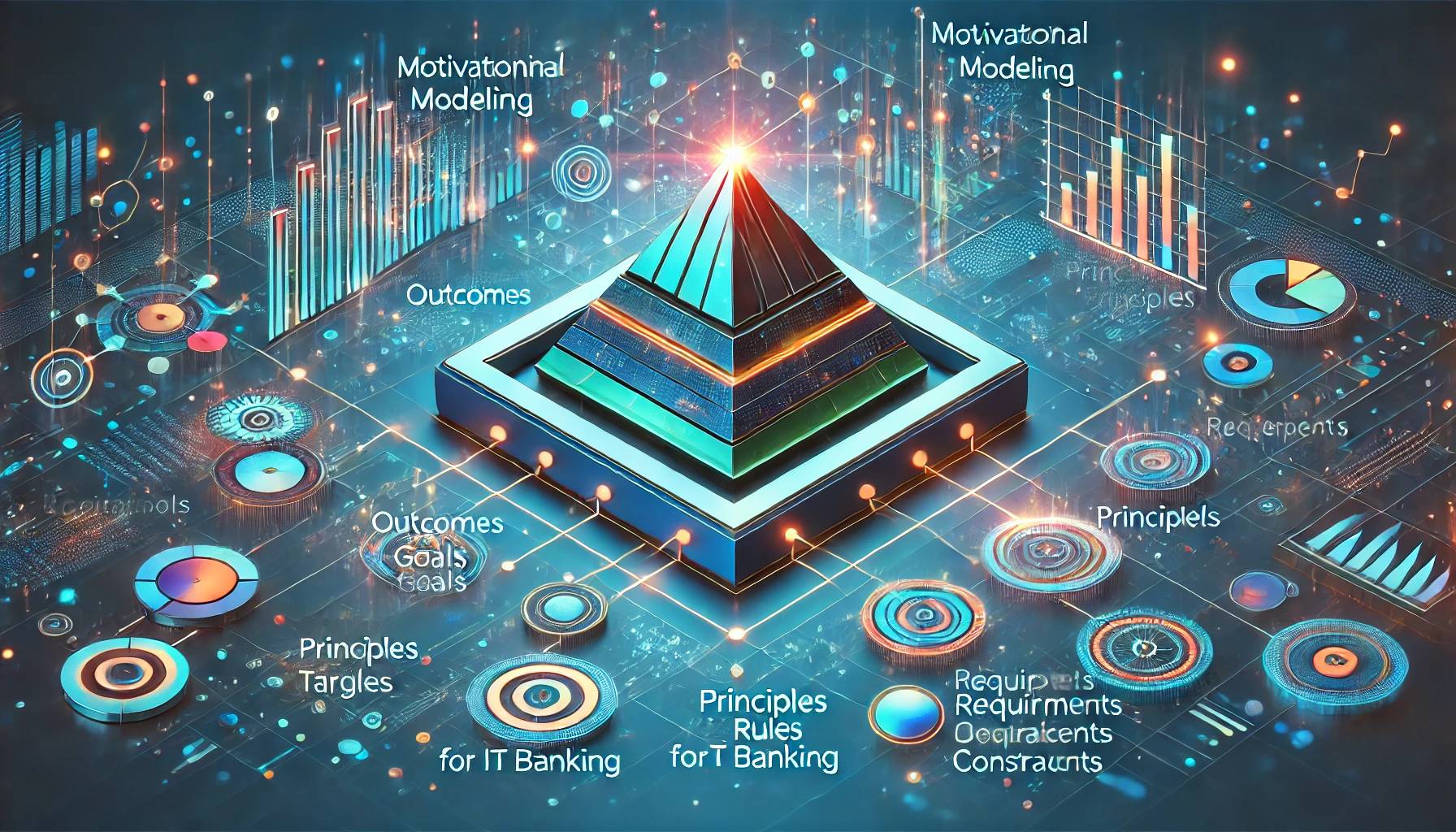Motivational modeling in ArchiMate provides a structured way to represent the intentions and reasoning behind organizational actions. It helps bridge the gap between high-level strategy and practical implementation, ensuring all efforts are aligned with business objectives. Key elements such as Goals, Outcomes, Principles, Requirements, and Constraints play distinct roles in this framework.
Here’s an in-depth look at these elements, supported by a real-life IT example:
Roles of Motivational Elements in ArchiMate
- Goal:
- Definition: A high-level statement of intent that the organization aims to achieve.
- Purpose: Guides strategic direction and provides clarity to stakeholders.
- Example: “Enhance customer satisfaction through seamless online banking.”
- Outcome:
- Definition: A measurable result or effect that directly supports achieving the goal.
- Purpose: Demonstrates tangible progress toward goals.
- Example: “Achieve a 25% increase in mobile app user ratings within one year.”
- Principle:
- Definition: A fundamental rule or guideline governing how goals and outcomes are pursued.
- Purpose: Ensures consistent decision-making across teams and projects.
- Example: “Adopt a mobile-first approach for all digital banking platforms.”
- Requirement:
- Definition: A specific need or condition that must be fulfilled to realize goals and outcomes.
- Purpose: Drives actionable implementation details.
- Example: “Develop a mobile app with real-time transaction updates and secure login features.”
- Constraint:
- Definition: A limitation or restriction that impacts how requirements can be fulfilled.
- Purpose: Highlights challenges or risks to account for in planning.
- Example: “Limited budget of $500,000 for app development and rollout.”
Real-Life Example: Enhancing IT Banking Services
Let’s illustrate how these elements interact in a motivational model for a banking IT project.
Scenario:
A bank wants to modernize its digital banking platform to meet customer demands, stay competitive, and comply with new regulatory requirements.
- Goal:
- “Modernize the digital banking experience to increase customer engagement and retention.”
- Outcome:
- “Launch a new mobile banking app with a 90% user satisfaction rate within 12 months.”
- “Ensure 100% compliance with GDPR and RBI guidelines during the rollout.”
- Principle:
- “Ensure data privacy and security at every stage of app development.”
- “Deliver customer-focused solutions with agile methodologies.”
- Requirement:
- “Integrate AI-driven personalization features for financial insights.”
- “Implement multi-factor authentication to enhance app security.”
- “Develop an intuitive user interface optimized for all device types.”
- Constraint:
- “Legacy systems must remain operational during the migration.”
- “Development must adhere to a strict 9-month timeline due to regulatory deadlines.”
Diagram Representation :
Using ArchiMate, this scenario could be visually represented in the motivational layer:
- Goal: Linked to Outcomes via dependencies.
- Outcomes: Influencing Requirements and guided by Principles.
- Principles: Defining the implementation framework for Requirements.
- Requirements: Highlighting dependencies with specific Constraints.
Benefits of Motivational Modeling in IT Banking
- Strategic Clarity: Aligns high-level goals with practical execution.
- Tangible Results: Outcomes provide measurable benchmarks for success.
- Consistency: Principles ensure alignment across teams and initiatives.
- Actionable Insights: Requirements offer clear guidance for development teams.
- Risk Management: Constraints help teams anticipate and mitigate challenges.
Final thought
Motivational modeling in ArchiMate serves as a blueprint for connecting strategic intent with actionable steps, ensuring IT projects are aligned with business priorities. In the dynamic world of IT banking, where customer demands and regulatory requirements constantly evolve, this framework is indispensable for driving innovation and achieving goals effectively.
